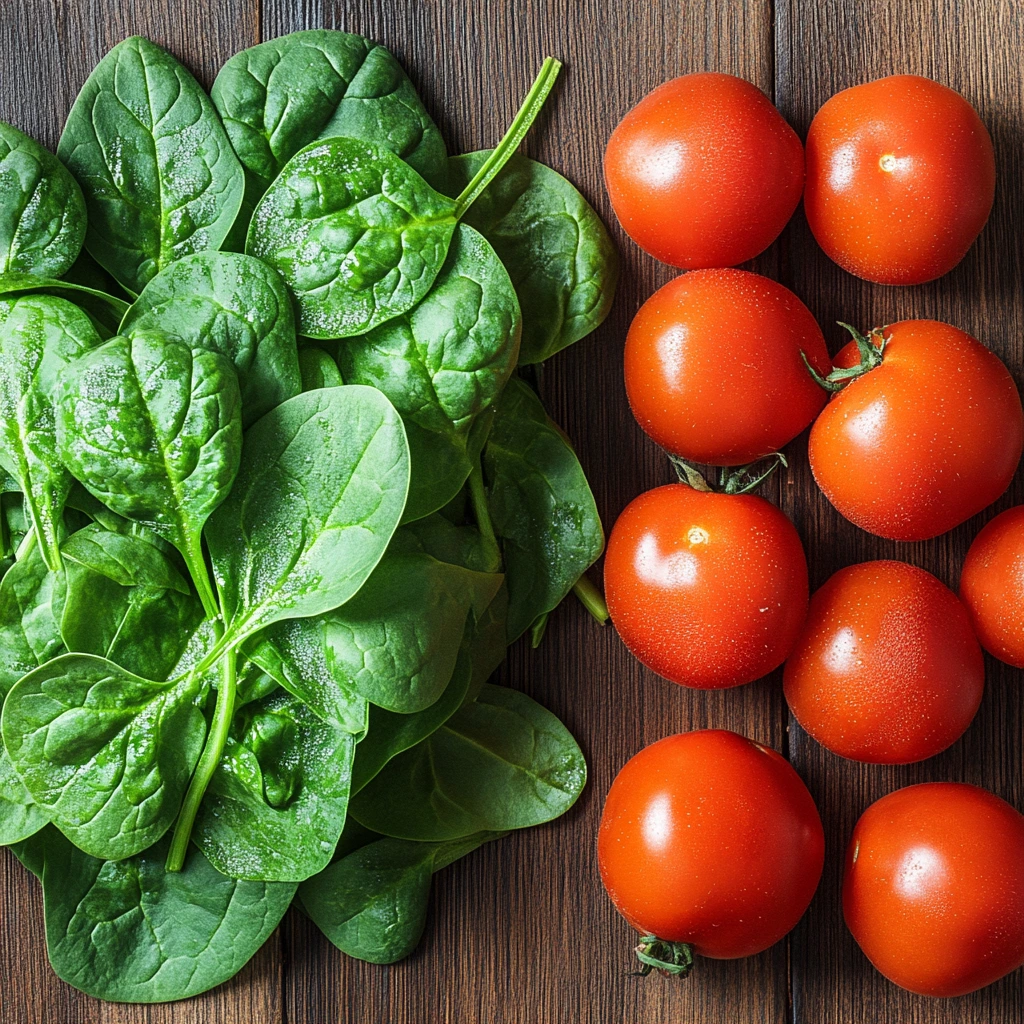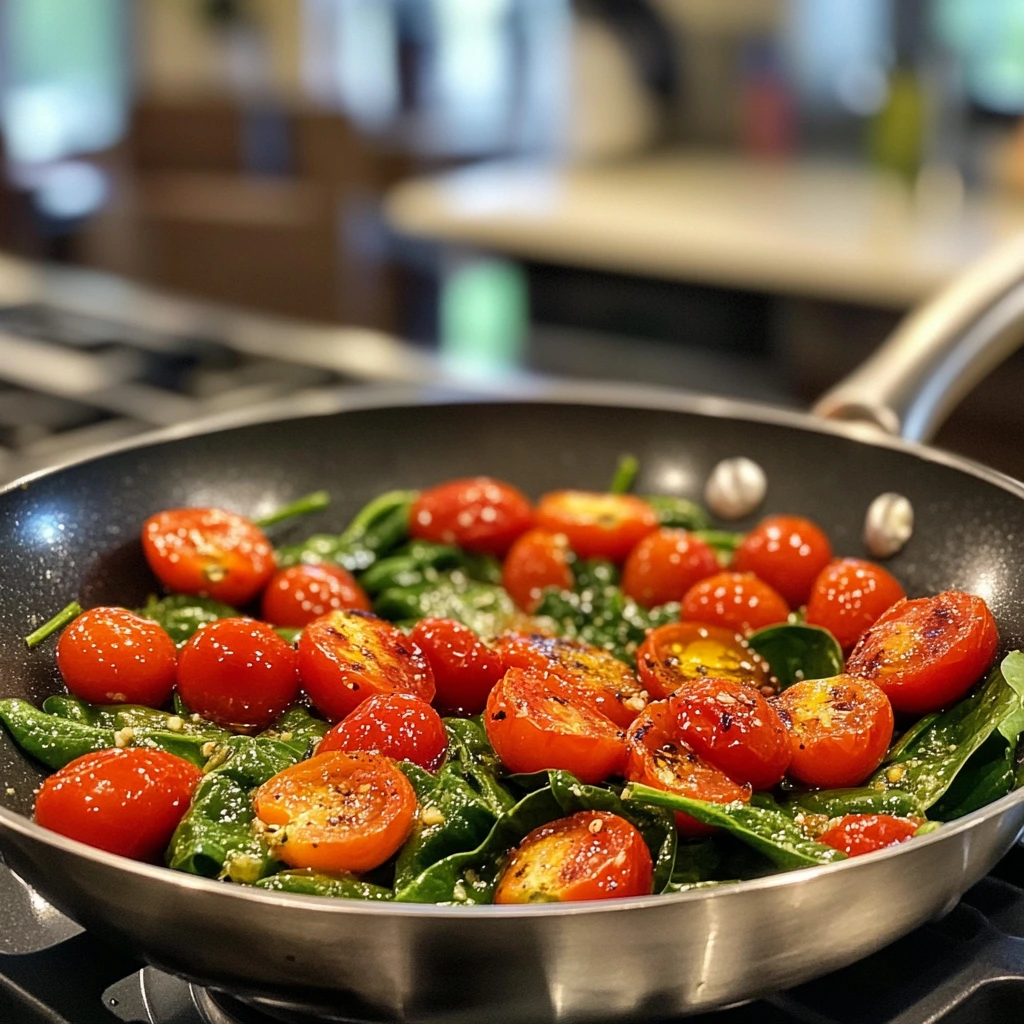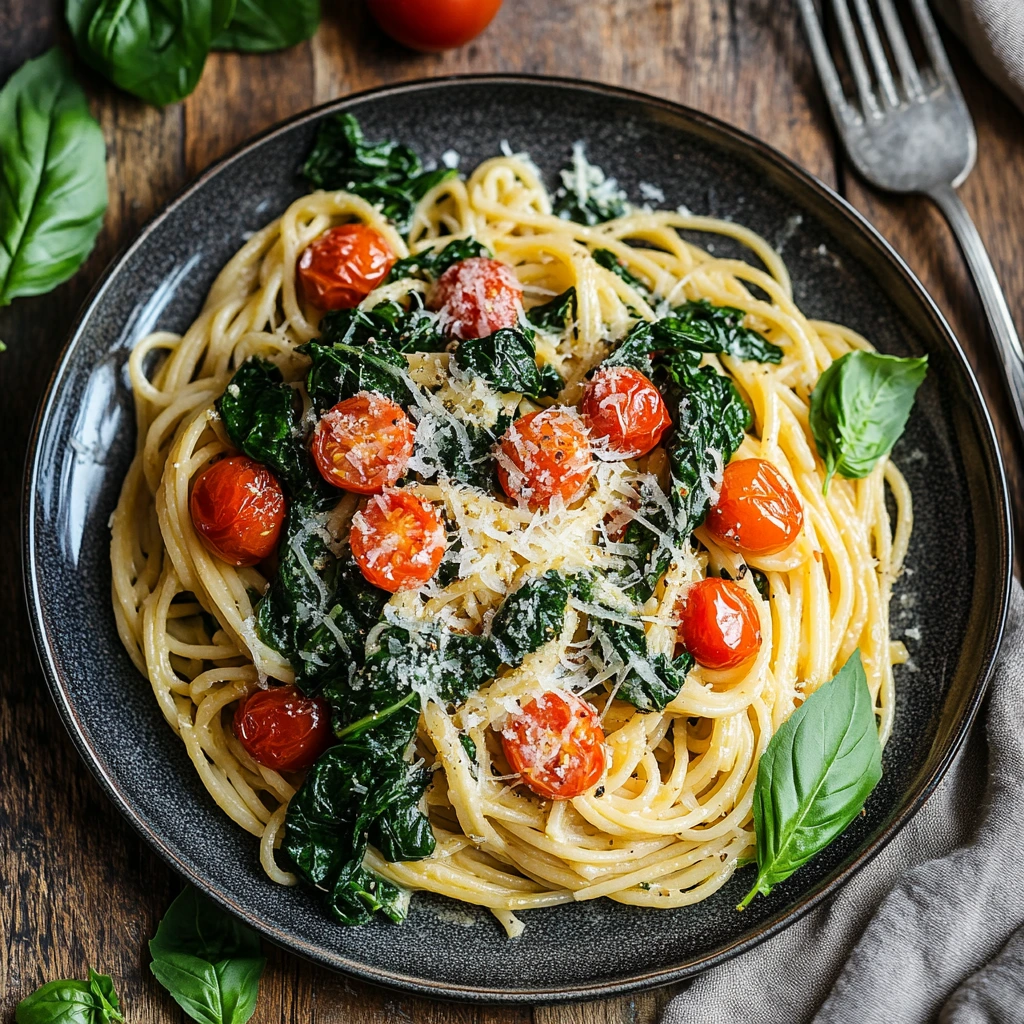Cooking is as much about taste as it is about making healthy choices. Many home cooks wonder, “Is it okay to cook spinach and tomato together?” This article dives deep into this intriguing question, exploring the nutritional profiles of these beloved ingredients, the benefits of combining them, and even potential concerns. With practical cooking tips and expert insights, you’ll be equipped to make informed and delicious choices for your meals.
Let’s start by understanding what spinach and tomatoes bring to the table—literally and nutritionally!
Nutritional Profiles of Spinach and Tomatoes
Vitamins and Minerals in Spinach
Spinach is undeniably a powerhouse of nutrition. Packed with essential vitamins such as vitamin K, vitamin A, and vitamin C, it contributes to everything from better vision to stronger bones. It’s also rich in iron and magnesium, making it ideal for combating fatigue and supporting muscle health.
Interestingly, spinach’s high iron content is in a form called non-heme iron, which can be tricky for the body to absorb. That’s where pairing it with foods rich in vitamin C—like tomatoes—comes in handy! This combo helps your body get the most out of spinach’s iron content.
Vitamins and Minerals in Tomatoes
Tomatoes, with their juicy, tangy flavor, are also nutritional stars. They’re packed with vitamin C, potassium, and a powerful antioxidant called lycopene. Lycopene not only gives tomatoes their vibrant red hue but also offers heart-protective and anti-inflammatory properties.
Moreover, tomatoes are low in calories yet high in hydration, making them an excellent choice for anyone looking to eat healthy without sacrificing flavor. Whether you sauté them or add them raw to salads, they’re endlessly versatile and beneficial.
Comparison and Synergy Between the Two
When spinach and tomatoes are cooked together, their nutrients work in harmony. For example, the vitamin C in tomatoes significantly boosts the absorption of spinach’s non-heme iron. Plus, the pairing delivers a robust dose of antioxidants, which can neutralize harmful free radicals and support your immune system.
Cooking these ingredients together also enhances the flavor profile, balancing spinach’s earthy tones with tomatoes’ bright acidity. Truly, this combination is a win-win for both your taste buds and your health.
Health Benefits of Combining Spinach and Tomatoes
Enhanced Iron Absorption
One of the standout benefits of combining spinach and tomatoes lies in their iron absorption synergy. Spinach is a fantastic source of iron, but it’s in a form called non-heme iron, which the body doesn’t absorb as easily as heme iron found in animal products. However, the vitamin C in tomatoes acts like a key, unlocking spinach’s iron so your body can absorb it more effectively.
For anyone battling fatigue, anemia, or low energy levels, pairing spinach with tomatoes in meals could make a noticeable difference. Imagine the impact of a simple tomato and spinach stir-fry, both delicious and energizing.

Synergistic Antioxidant Effects
Spinach and tomatoes aren’t just nutritious on their own; together, they pack a powerful antioxidant punch. Spinach is loaded with lutein and zeaxanthin, which are excellent for eye health. Tomatoes, on the other hand, boast lycopene, a carotenoid that helps protect against cellular damage and supports heart health.
When cooked, the antioxidants in tomatoes become even more bioavailable, meaning they’re easier for your body to use. Pairing cooked tomatoes with spinach enhances these effects, offering a nutrient-dense, anti-inflammatory combo.
Immune Boosting and Anti-Inflammatory Properties
Combining spinach and tomatoes creates a dish rich in nutrients that fortify your immune system. Vitamin C from tomatoes, alongside the beta-carotene and folate in spinach, strengthens immunity and promotes faster healing. Meanwhile, these vegetables’ anti-inflammatory properties can help reduce chronic inflammation, which is linked to conditions like heart disease and arthritis.
Whether enjoyed as part of a hearty soup or a quick sauté, this combination supports your overall well-being in ways that go far beyond flavor.
Part 3: Culinary Compatibility of Spinach and Tomatoes
Flavor Profiles and Pairing
Spinach and tomatoes make a natural culinary duo. Spinach, with its mild and slightly earthy flavor, pairs beautifully with the tangy, acidic sweetness of tomatoes. Together, they create a balance that appeals to a wide range of palates.
Their complementary nature is why you’ll often find them side by side in popular dishes like spinach and tomato quiche, pasta, or curry. The juicy tomatoes cut through spinach’s density, while spinach adds texture and a nutrient boost to tomato-based recipes.
Popular Dishes Featuring Both Ingredients
From quick meals to elaborate recipes, spinach and tomatoes shine in countless dishes:
- Spinach and Tomato Pasta: A classic Italian favorite where sautéed spinach and tomatoes meet garlic, olive oil, and al dente spaghetti.
- Tomato and Spinach Omelet: A protein-packed breakfast option that’s flavorful and filling.
- Spinach and Tomato Soup: A comforting dish combining the creamy richness of spinach with the tang of tomatoes.
These dishes highlight how versatile and easy it is to combine these two ingredients for tasty, wholesome meals.
Balancing the Acidity
While tomatoes bring brightness to any dish, their acidity can sometimes overwhelm the palate. To balance this, you can:
- Add a pinch of sugar to mellow the tanginess.
- Pair with creamy ingredients like cheese or yogurt to neutralize the sharpness.
- Incorporate seasonings like garlic, cumin, or herbs to round out the flavors.
By carefully balancing acidity, you ensure that your spinach and tomato dishes are both delicious and well-rounded in taste.
Cooking Methods for Spinach and Tomato Dishes
Sautéing Techniques
One of the simplest and quickest ways to combine spinach and tomatoes is through sautéing. A drizzle of olive oil, a clove of minced garlic, and a handful of cherry tomatoes can transform into a flavorful base. Toss in fresh spinach leaves, and within minutes, you have a nutrient-packed side dish.
To make the most of their natural flavors, start by heating your oil and lightly browning the garlic. Add the tomatoes and let them blister slightly—this releases their sweetness. Then, throw in the spinach, stirring gently until it just wilts. Overcooking spinach can lead to nutrient loss and a soggy texture, so less is more.

Baking and Roasting Approaches
If you’re craving something heartier, baking or roasting spinach and tomatoes can elevate your meal. Layer them into casseroles, mix them into quiches, or even roast them on a sheet pan with other vegetables.
For instance, a spinach and tomato quiche combines creamy eggs with the fresh flavors of these vegetables, while roasting cherry tomatoes with spinach alongside garlic and herbs creates a vibrant topping for grilled chicken or fish. These methods deepen the flavor of the tomatoes while preserving the delicate taste of spinach.
Cooking Tips to Preserve Nutrients
Cooking can sometimes diminish the nutrient content of vegetables, so it’s essential to use methods that retain as much goodness as possible.
- Quick Cooking: Methods like steaming or flash sautéing preserve spinach’s vitamin C and folate.
- Avoid Overheating Tomatoes: Gentle roasting at lower temperatures maintains their lycopene content while enhancing their sweetness.
- Use Minimal Water: When boiling or blanching, excess water can strip away nutrients. Instead, try steaming or stir-frying.
By adopting these techniques, you’ll not only preserve the natural nutrients in spinach and tomatoes but also enhance their textures and flavors.
Potential Health Considerations
Oxalate Content and Kidney Health
Spinach, while incredibly nutritious, contains oxalates, naturally occurring compounds that can bind with calcium and lead to the formation of kidney stones in susceptible individuals. When combined with tomatoes, which are acidic, the risk of oxalates crystallizing might increase if consumed in excessive amounts.
That said, it’s important to put this risk into perspective. Unless you have pre-existing kidney conditions or a history of kidney stones, enjoying spinach and tomatoes together in moderation is perfectly fine. To mitigate risks, pair these ingredients with calcium-rich foods like cheese or yogurt, which can reduce oxalate absorption.
Acidic Nature and Digestive Implications
Tomatoes’ high acidity can sometimes cause digestive discomfort for people with sensitive stomachs or acid reflux. When combined with spinach, which has a slightly alkaline pH, the overall acidity of the dish might still be noticeable but less aggressive.
To make this pairing gentler on your stomach, consider cooking the tomatoes to reduce their acidity or adding a pinch of baking soda while cooking. Alternatively, incorporating creamy ingredients or starchy sides can help neutralize the acidity and improve digestibility.
Balancing Potential Risks
The potential downsides of cooking spinach and tomatoes together can be managed with a few smart choices:
- Use Dairy or Non-Dairy Alternatives: Adding creamy elements balances acidity and reduces the effects of oxalates.
- Portion Control: Stick to moderate servings to enjoy the nutritional benefits without overloading on oxalates or acidity.
- Stay Hydrated: Drinking plenty of water can help flush excess oxalates and reduce the risk of kidney stones.
Ultimately, the occasional enjoyment of a well-prepared spinach and tomato dish is unlikely to cause health issues for most people.
Expert Opinions on Combining Spinach and Tomatoes
Nutritional Experts’ Perspectives
Dietitians and nutritionists generally agree that spinach and tomatoes are a nutritious pairing when consumed in moderation. The vitamin C in tomatoes boosting the absorption of spinach’s iron is a well-documented benefit. Experts also highlight the importance of balanced preparation methods to maximize nutrient retention while mitigating potential concerns, such as oxalate overload.
Dr. Lisa Marshall, a registered dietitian, emphasizes that “when paired with calcium-rich ingredients, spinach and tomatoes can be enjoyed safely by most people, even those concerned about kidney health.” This aligns with the idea that moderation and mindful combinations are key.
Culinary Chefs’ Insights
Professional chefs praise the culinary harmony of spinach and tomatoes. The earthy tones of spinach balance the tanginess of tomatoes, creating a dynamic flavor profile suitable for a wide range of dishes. Chef Elena Ruiz, known for her Mediterranean recipes, says, “Spinach and tomatoes bring vibrancy to both the plate and palate. Their compatibility lies in their ability to absorb seasonings and adapt to diverse cooking styles.”
Chefs often suggest quick-cooking methods, like sautéing or blanching, to preserve the freshness of spinach while intensifying the flavor of tomatoes. Additionally, roasting tomatoes to caramelize their natural sugars is a common trick to add depth to dishes like quiches, pastas, and stews.
Cultural Relevance
Across cultures, spinach and tomatoes are a beloved combination in cuisines ranging from Indian to Italian. In Indian curries, they form the backbone of dishes like palak tamatar, where bold spices elevate the pairing. In Italian kitchens, they’re stars in everything from fresh salads to hearty lasagna.
This global appreciation underscores their versatility and proves that, when prepared thoughtfully, spinach and tomatoes can delight both the taste buds and the body.
Frequently Asked Questions about cooking spinach and tomato together
Can cooking spinach and tomatoes together cause health issues?
Cooking spinach and tomatoes together is safe for most people. While spinach contains oxalates, which in excess may contribute to kidney stones, this is generally only a concern for individuals with pre-existing kidney issues. Combining spinach with tomatoes is unlikely to cause harm when consumed in moderation. Additionally, incorporating calcium-rich ingredients can help reduce oxalate absorption.
What are some popular recipes that include both spinach and tomatoes?
Spinach and tomatoes are a classic combination found in numerous dishes worldwide. Some popular recipes include:
- Spinach and tomato pasta, where sautéed spinach and blistered cherry tomatoes meet garlic and olive oil.
- Tomato and spinach omelet, a quick and healthy breakfast packed with protein.
- Spinach and tomato curry, a flavorful Indian dish enriched with spices and cream.
These recipes highlight the versatility of this pairing in diverse cuisines.

How can I balance the flavors when cooking spinach and tomatoes together?
To achieve a well-balanced dish, it’s important to consider the acidity of tomatoes and the earthy flavor of spinach. Adding creamy elements like cheese, yogurt, or coconut milk can help neutralize the acidity. You can also enhance the flavor by incorporating seasonings like garlic, cumin, or herbs like basil and oregano. A pinch of sugar or a squeeze of honey can subtly sweeten and round out the dish.
Are there any nutrient losses when cooking spinach and tomatoes?
Cooking spinach and tomatoes does lead to some nutrient loss, particularly water-soluble vitamins like vitamin C. However, gentle cooking methods such as steaming, quick sautéing, or roasting can minimize these losses while enhancing their flavors. Interestingly, cooking tomatoes increases the bioavailability of lycopene, a powerful antioxidant.
Can this combination help improve my iron levels?
Yes! Combining spinach and tomatoes can boost your iron intake. Spinach provides non-heme iron, and the vitamin C in tomatoes enhances its absorption. This makes the pairing particularly beneficial for individuals looking to prevent or manage anemia.
Are spinach and tomatoes suitable for low-acid diets?
Tomatoes are naturally acidic, so they might not be ideal for strict low-acid diets. However, you can reduce the acidity by cooking the tomatoes and adding neutralizing ingredients like dairy or baking soda. Spinach, being slightly alkaline, can help balance the dish.
Conclusion
Cooking spinach and tomatoes together is a delightful and nutritious choice that can elevate any meal. While potential concerns like oxalates and acidity exist, they’re easily managed with balanced preparation. By combining the earthy richness of spinach with the bright tang of tomatoes, you can enjoy a dish that’s not only flavorful but also packed with health benefits. Cooking spinach and tomatoes together is not just okay—it’s a delicious, nutrient-packed choice for any meal!

